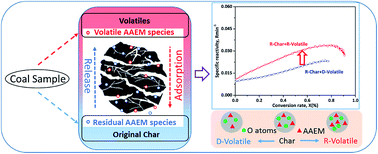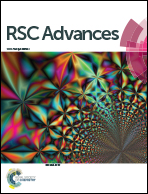Importance of volatile AAEM species to char reactivity during volatile–char interactions
Abstract
The volatile alkali and alkaline earth metallic (AAEM) species are an important component of the involved reactants during volatile–char interactions and are beneficial to char reactivity. A fluidized-bed/fixed-bed combination reactor was employed to investigate the effects of volatile AAEM species on the char reactivity at 800 °C. ICP-OES and X-ray Photoelectron Spectroscopy (XPS) were utilized to reveal the evolution of AAEM species and char structures during volatile–char interactions. The results indicate that a large proportion of volatile AAEM species would migrate onto the char substrate, amounting to over 50% of the volatilization amount of AAEM species derived from char during volatile–char interactions. Concentrations of AAEM species accord well with the oxygen atomic concentrations on the char surface. The volatile AAEM species migrated onto the char would bond with the oxygen preferentially, likely to stabilize the oxygen-containing structures. The reactivity of the char reacted with the volatile loading of AAEM species is about two times higher than that reacted with the volatile free-of-AAEM species. It is believed that the volatile AAEM species show a better catalytic activity than the residual AAEM species in original char, possibly due to the more stable bonds between volatile AAEM species and the char matrix, or the better dispersion of volatile AAEM species in char. The conclusions clearly demonstrate that the volatile AAEM species play a significant role in the char reactivity.



 Please wait while we load your content...
Please wait while we load your content...